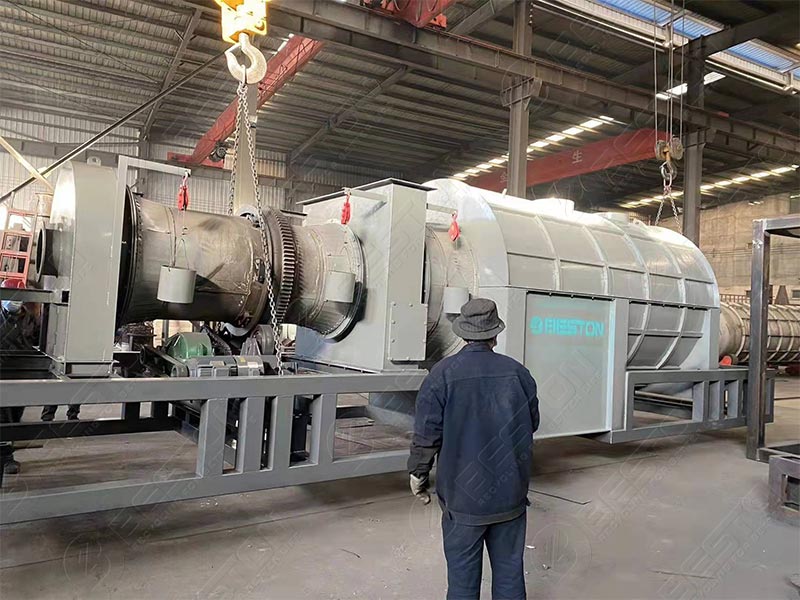What You Need To Know About The Charcoal Making Plant
A Charcoal Making Plant refers to a process that involves converting waste materials or biomass into charcoal. The process entails pyrolyzing the materials under a very high temperature in an oxygen-free environment.
Raw Materials Used To Make Charcoal
Biomass:
Sugarcane, peanut shells, olive shells, sawdust, palm shells, coconut shells, rice husks, bamboo, and wood.
Sorted MSW (Municipal Solid Waste)
Sewage Sludge

The charcoal carbonization process follows these steps:
– Pretreatment
– Carbonization
– Smoke discharge
– Charcoal enrichment
Carbonization(planta de carbonización) requires that the moisture content of the raw materials cannot exceed 20% and the size of the materials cannot be larger than 50mm. For raw materials that exceed these parameters, the carbonization plant will need to be equipped with a crusher and dryer to improve working efficiency.
The Primary Components Of The Charcoal Making Machine

The charcoal-making plants(maquina para hacer carbon) come equipped with a carbonizing machine, a dryer, and other necessary auxiliary equipment. In addition to these parts, there are other supporting devices that include a drying rack, flash steaming, feeding, discharging, carbonizing, cooling, recycling of the exhaust gas, a gasification furnace, wet-dust catcher, and the related pipes.
– Casing
The charcoal furnace comes equipped with a durable and reliable casing that serves the function of protecting and maintaining a consistent temperature inside the furnace and stopping any workers or operators from coming into direct contact with the machine.
– The De-dusting System
This is a dust-removal system that is made up of a spray-dust collector and a cyclone-dust collector, The flue gas that is generated from the furnace is completely purified through the de-dusting system.
– The Cooling System
It is very dangerous to directly discharge the final product (the charcoal), which is why the charcoal-making plants(https://www.bestoneco.com/hornos-metalicos-para-hacer-carbon/) include a cooling system that is designed to first cool the charcoal down so that it can be discharged safely. A multi-channel water discharging system is faster and better to lower the temperature. It also helps to avoid spontaneous combustion.
– PLC Controlling System
The PLC controlling system helps to separate the operator from the machine. These control panels are intelligent, efficient, and safe.
Takeaway Notes For Charcoal Production Plants
– If the moisture content of the raw materials exceeds 15%, the plant must include a dryer.
– The raw material sizes cannot exceed 50mm. If they do a crusher is required.
– The temperature for carbonization is between 400℃ and 600℃. With these high temperatures, the carbonization speed is quicker, the larger the production, and the lower the production costs.
– In general, after 15 to 20 minutes, the raw materials will be converted into charcoal.
– The common heating materials used to heat the furnace include natural gas, wood, and charcoal.
– The working styles of the charcoal-making machines (beston eco grupo)include continuous or automatic one-side feeding and other-side discharging.
– The carbonization rate is usually 3:1 or 4:1, but these rates can differ according to the temperature inside the carbonization furnace, the raw materials, and any other factors that could have an impact on the final product.